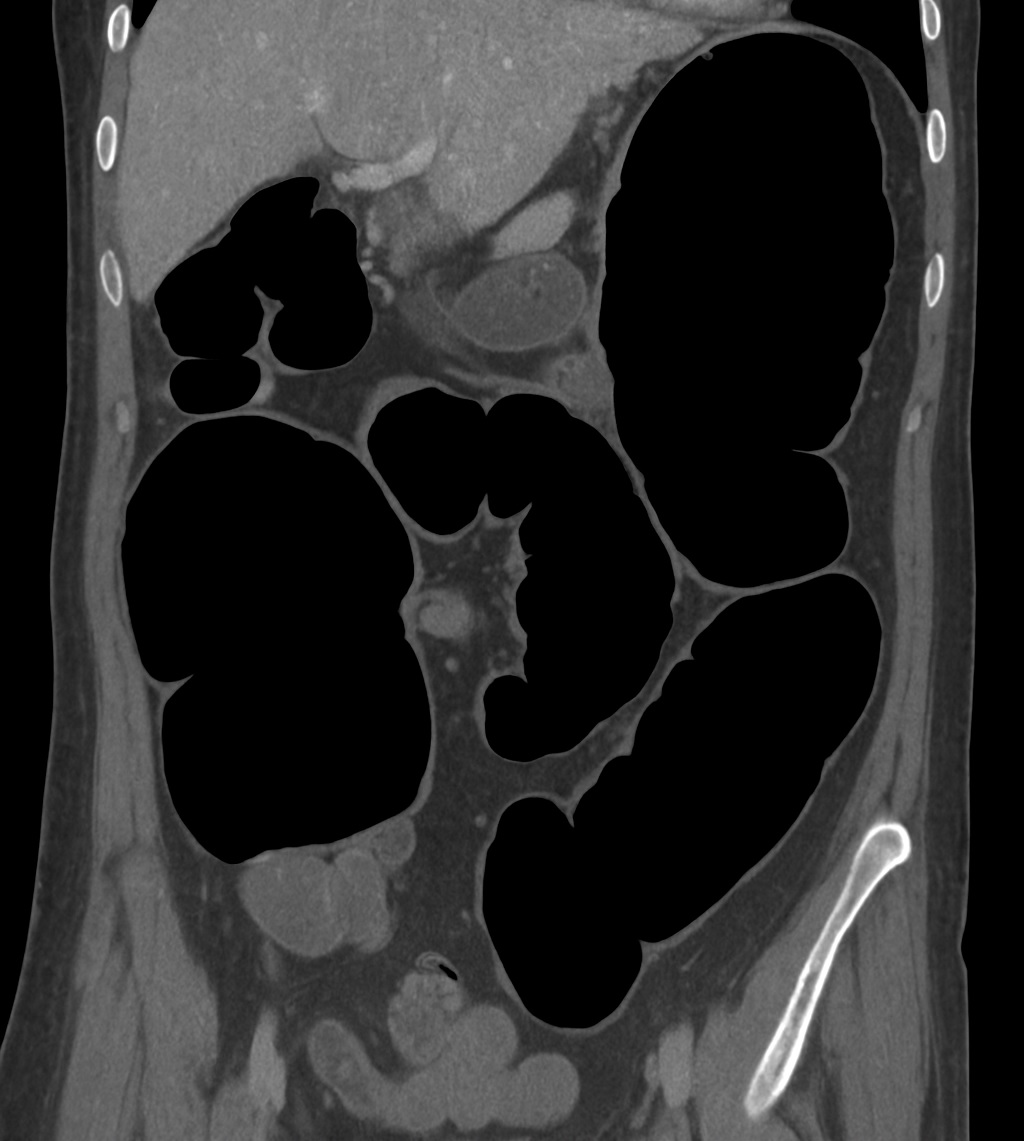Sunday Poster Session
Category: Colon
When Eradication Turns Deadly: Fulminant <i>C. difficile</i> Colitis After Quadruple Therapy
P0405 - When Eradication Turns Deadly: Fulminant C. difficile Colitis After Quadruple Therapy
- CC
Corinne Caissie, MD
Yale New Haven Health, Bridgeport Hospital
Bridgeport, CT
Presenting Author(s)
Yale New Haven Health, Bridgeport Hospital, Bridgeport, CT
Introduction:
Clostridioides difficile infection (CDI) is a known complication of antibiotic therapy, but the combined impact of intensive Helicobacter pylori eradication regimens on CDI risk is underrecognized. We report a fatal case of toxic megacolon due to CDI shortly after bismuth quadruple therapy in a patient recently recovering from COVID-19.
Case Description/
Methods:
A 68-year-old male with hypertension and refractory H. pylori gastritis completed 14 days of bismuth quadruple therapy (bismuth, tetracycline, metronidazole, and PPI) following a recent COVID-19 infection. Five days later, he presented with fever, diarrhea, abdominal pain, and bloating. He was febrile to 104°F, tachycardic (HR 105 bpm), and hypotensive (BP 92/56). Labs showed leukocytosis (WBC 53,000/μL), lactate 6 mmol/L, and positive stool assay for C. difficile toxins A and B. CT abdomen/pelvis revealed pan-colonic dilation consistent with toxic megacolon. He received IV metronidazole and oral vancomycin and was admitted to the ICU. Despite escalation to vasopressors and emergent subtotal colectomy with end ileostomy on hospital day 5, the patient developed worsening acidosis and multi-organ failure, ultimately dying on hospital day 9.
Discussion:
While bismuth quadruple therapy is considered standard for H. pylori eradication, it carries underappreciated risks for severe CDI. Although tetracycline and metronidazole are traditionally viewed as low-risk antibiotics, their prolonged combination can significantly disrupt microbial diversity and select for toxin-producing C. difficile strains. Moreover, H. pylori colonization may help stabilize the gastric and intestinal microbiome; its eradication transiently reduces protective commensals like Bifidobacterium and Lactobacillus. Adding complexity, recent COVID-19 infection can exacerbate gut dysbiosis and impair mucosal immunity through ACE2 disruption and reduced antimicrobial peptides, further predisposing to CDI. Hospitalized COVID-19 patients show up to 3.5x higher CDI risk. This patient's rapid decline underscores how antibiotic-induced microbiota depletion, coupled with post-viral immune disruption, can culminate in fulminant colitis and toxic megacolon—a rare (< 0.5%) but deadly CDI complication with >40% mortality post-colectomy.
Clinicians should recognize the potential synergy between recent viral illness and multi-drug therapy in destabilizing gut defenses, and consider early CDI screening and risk mitigation strategies in such patients.
Figure: Coronal view of CT abdomen revealing toxic megacolon
Disclosures:
Corinne Caissie indicated no relevant financial relationships.
Simran Joshi indicated no relevant financial relationships.
Cheng-Hung Tai indicated no relevant financial relationships.
Corinne Caissie, MD, Simran Joshi, MD, Cheng-Hung Tai, MD. P0405 - When Eradication Turns Deadly: Fulminant <i>C. difficile</i> Colitis After Quadruple Therapy, ACG 2025 Annual Scientific Meeting Abstracts. Phoenix, AZ: American College of Gastroenterology.
